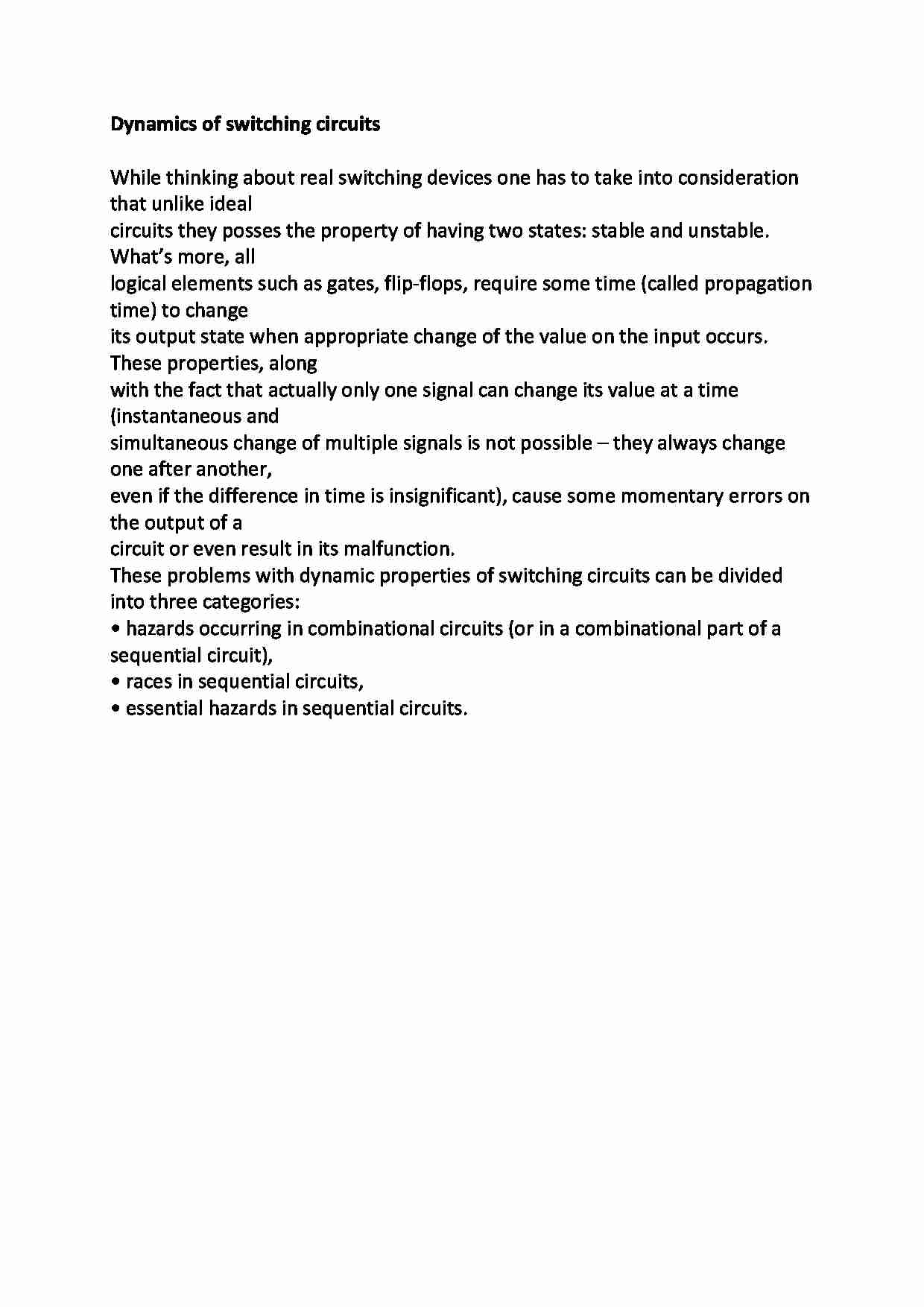
Dynamics of switching circuits While thinking about real switching devices one has to take into consideration that unlike ideal
circuits they posses the property of having two states: stable and unstable. What's more, all
logical elements such as gates, flip-flops, require some time (called propagation time) to change
its output state when appropriate change of the value on the input occurs. These properties, along
with the fact that actually only one signal can change its value at a time (instantaneous and
simultaneous change of multiple signals is not possible - they always change one after another,
even if the difference in time is insignificant), cause some momentary errors on the output of a
circuit or even result in its malfunction.
These problems with dynamic properties of switching circuits can be divided into three categories:
• hazards occurring in combinational circuits (or in a combinational part of a sequential circuit),
• races in sequential circuits,
• essential hazards in sequential circuits.
... zobacz całą notatkę



Komentarze użytkowników (0)